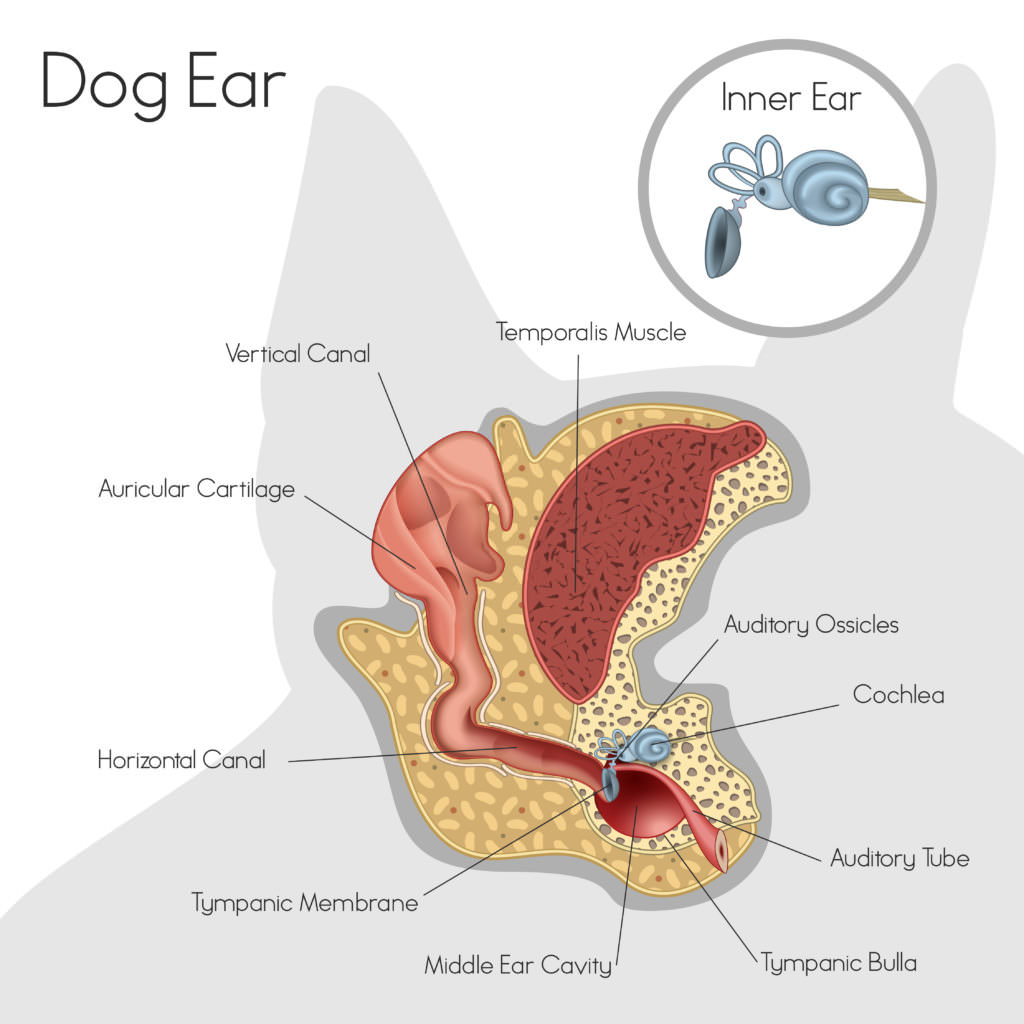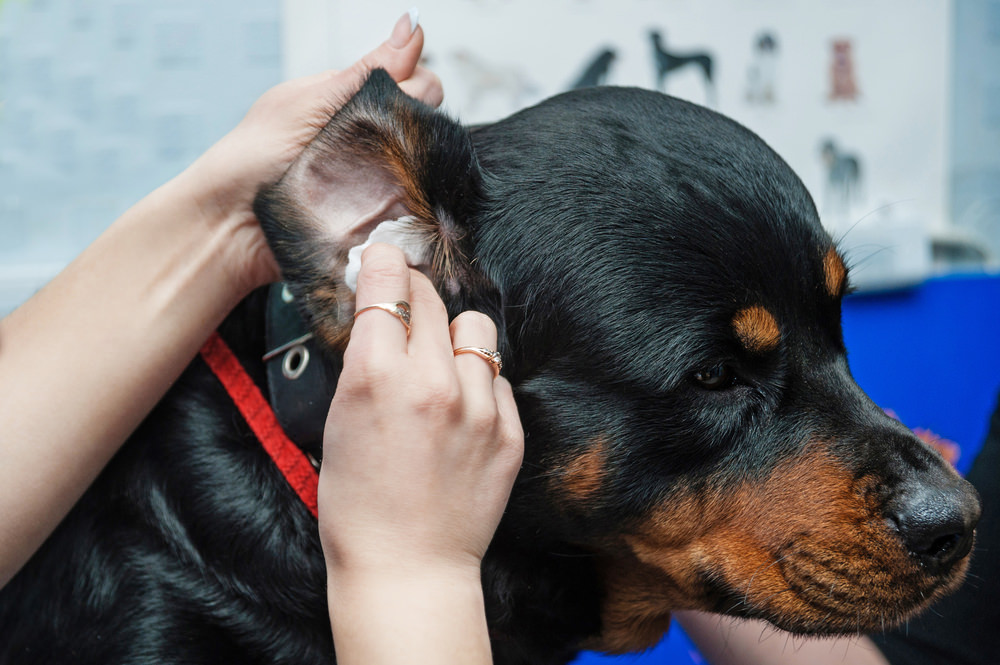With all the health hazards that our canine friends come in contact with everyday, it’s amazing that the most common reason for vet visits is ear infections. According to Nationwide pet insurance, ear infection visits outnumber skin allergies, arthritis, hot spots (pyoderma), soft tissue trauma, intestinal inflammation, hypothyroidism, tumors and eye infections.
The Cost of Veterinary Treatment for an Ear Infection can range from $200 – $3,500*

There are various causes for ear infections. The most common is moisture, which gets trapped in the ear due to the shape of a dog’s ear canal. This moisture promotes bacteria growth and can lead to serious painful, and expensive, health issues for your canine companion.
Related: Does Pet Insurance Cover Ear Infections?

Common Causes of Ear Infections
- Allergies (e.g. Food, grass, environmental)
- Excessive hair
- Parasites/Ear mites
- Excess moisture
- Wax Build-up
- Poor hygiene
- Foreign bodies, such as foxtails and grass seeds
- Hypothyroidism
So how do you know if your dog has an ear infection or some other issue? We all know dogs are the masters of hiding when they’re hurt or feel discomfort. The most common signs & symptoms of an ear infection include:
-
Rubbing of the ear and surrounding area on the floor or furniture
-
Redness/Swelling
-
Earwax Buildup could lead to infection
-
Scratching of the ear or area around the ear
-
Brown, yellow, or bloody discharge
-
Odor in the ear
-
Crusts or scabs on inside of the outer ear
-
Hair loss around the ear
-
Hearing loss
-
Bleeding of the ear canal

If your dog has an ear infection or if you thinks it’s a possibility, it’s time to visit your veterinarian. Your pup may require antibiotics or other prescription medication. However, the best treatment for an ear infection is prevention. Benjamin Franklin once said, “An ounce of prevention is worth a pound of cure.”
With a little extra attention and a few easy steps, you can prevent most ear infections.

Prevent Pain & Costly Problems
Minimize moisture
Common causes of water in the ear are bathing, swimming and grooming. If you have a dog that loves water, this could be a year-round struggle, but especially in the hotter months when you dog is more likely to take a dip. So after your dog does anything where there could be a chance of water in the ears, gently dry the ears with a towel or cotton ball and apply a gentle cleanser. You can also make your own drying solution by mixing equal parts apple cider vinegar and purified water. Hydrogen Peroxide also works, but never use rubbing alcohol, which can cause irritation or burning.
Clean ears regularly
Regularly using a gentle cleaning product is a great way to prevent infections or irritation. Doing this immediately after exposure to water is most effective. But even if your dog hasn’t been in water, doing this periodically is a great way to limit chances of infection while keeping the ears clean. Never use a Q-tip to clean a dogs ears! You could push wax or foreign bodies deeper into the ear canal, or worse, rupture the ear drum.
Take a look (and a smell!)
When a dog has an ear infection, it’s common to scratch or rub their ears. However, it may require you taking a look. Gently lift the ear flap and visualize the ear canal. Is it red? Swollen? Or maybe emitting a foul odor? These are all signs of a potential infections. Don’t wait. If you even think there is a chance of infection, it’s important to get early and definitive treatment. It’s time to see your vet.

Listen Up! Take Care of Those Ears!
Ear infections are serious business, but by taking a few extra precautions, namely frequent cleaning and inspection, you can help prevent your pooch’s suffering from this painful, and possibly expensive condition. So get them groomed and let them play in the water (unless otherwise instructed by your vet), but be sure to clean, dry, and check their ears frequently!
These statements have not been evaluated by the Food and Drug Administration. This product is not intended to diagnose, treat, cure, or prevent any disease. The information on this website is not intended to replace a one-on-one relationship with a qualified health care professional.

